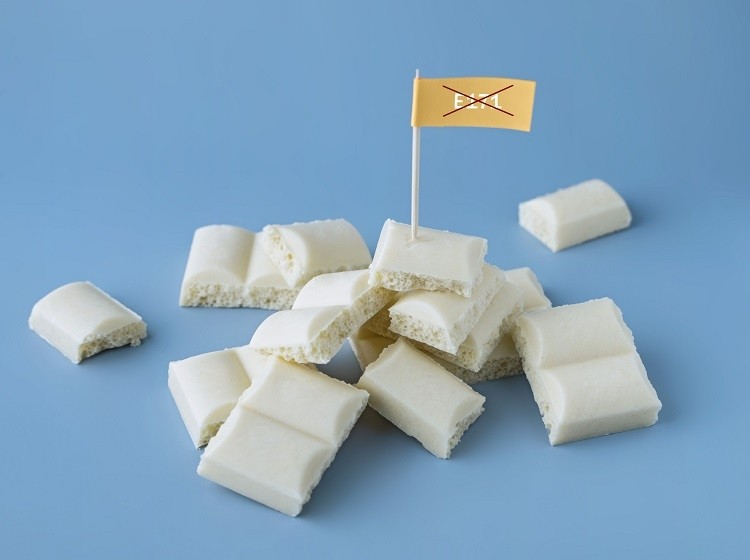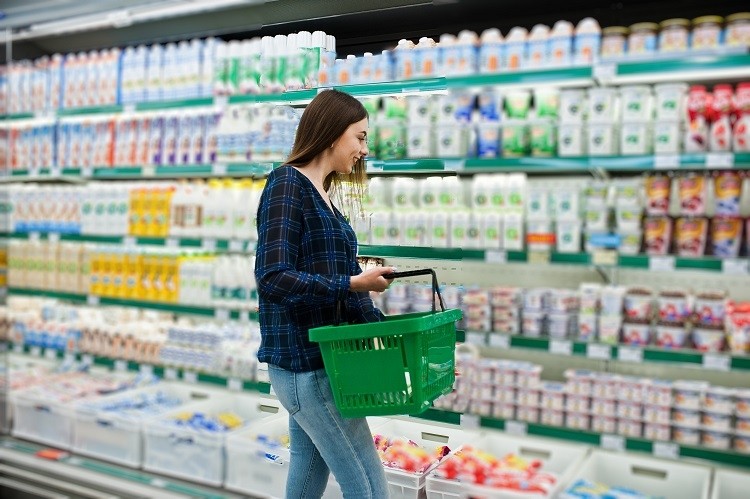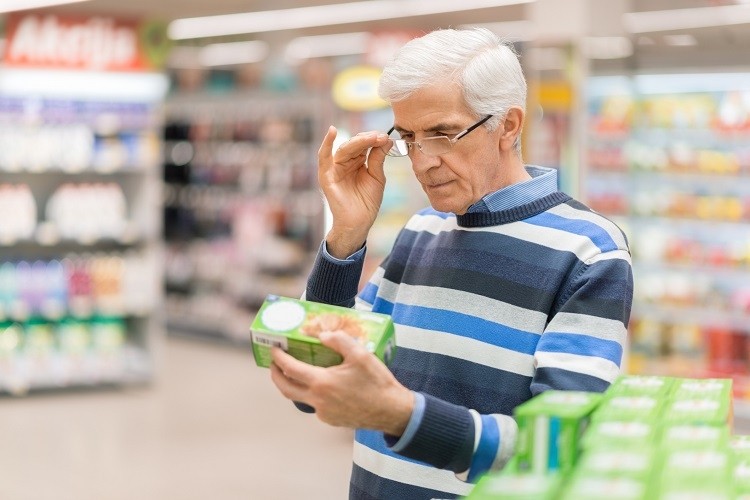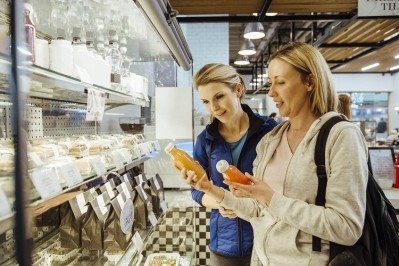How is clean label evolving? Mintel talks regulation, processing, and linking ‘clean with green’

‘Clean label’ has long been trending in the food and beverage space, driven by distaste for ingredients or additives perceived to be unnatural or artificial in food and drink.
While immensely popular, the ‘clean label’ trend is anything but stagnant, suggests Mintel’s Emma Schofield, Associate Director, Global Food Science. So how is it evolving in Europe?
The perception of ‘clean’
The ‘clean label’ trend is founded on consumer perception. “Consumers don’t always have a very good understanding of ingredient source, origin, and whether or not ingredients are natural or artificial,” explained Schofield.
This is perhaps hindered by the term ‘clean label’ itself. Like ‘natural’ and ‘healthy’, ‘clean label’ has no legal definition and is therefore open to the interpretation of the consumer.
The term ‘clean’ on pack is uncommon, Schofield told FoodNavigator. Rather, producers tend to feature claims that are linked to consumer perception of a ‘clean’ product. These could include claims such as ‘no artificial flavours’, ‘no high-fructose corn syrup’ or ‘no monosodium glutamate’.
“The fundamental of a clean label lies in the absence of ingredients that are perceived to be unnatural or artificial, such as artificial sweeteners, MSG, nitrates, or artificial flavours,” we were told.
The market research firm has also observed ‘clean’ products intentionally leaving out heavily-refined ingredients, even those that don’t fall into the additives category. “Ingredients like heavily-refined sugars (high-fructose corn syrup for example), modified starches, or refined fat such as partially hydrogenated oils with trans fats, these are also often incompatible with what consumers believe to be a clean or natural product,” explained Schofield.
“In short, clean label is about finding real food ingredients in recipes where you would expect to find those ingredients.”
New spins on ‘clean label’
The trend is not all about excluding ‘unnatural’ or heavily-refined ingredients from the back-of-pack, however. Mintel has observed ‘new spins’ on the ‘clean label’ trend.
Increasingly, the market research firm is noticing ‘free-from’ claims feature on-pack. These range from gluten-free to dairy-free and soy-free, which Schofield believes feed into the ‘clean label’ trend.
“Many consumers now embrace these diets as a lifestyle trend rather than because of a medical need. And some consumers therefore, rightly or wrongly, believe that avoiding these allergens or ingredients linked to intolerances is ‘cleaner’ and ‘healthier’.”
Another key spin on the trend, according to Schofield, is the diet trend of ‘clean’ eating. In some countries, the ‘clean label’ trend has supported the emergence of this ‘trendy’ social media-driven diet, we were told.
“Although it’s without a formal definition, it’s typically defined as a diet whereby followers consume so-called whole, real, pure and unprocessed foods.”

The market research firm has also observed opportunities for brands to link ‘clean’ with ‘green’.
Just as consumers link ‘clean’ and ‘natural’ attributes with their own health, they also link ‘clean’ and natural attributes with the health of the planet, we were told. Fifty-six percent of US consumers agree that ‘natural’ or organic foods are safer for the environment than conventional foods, according to Mintel research. Sixty-one percent of consumers agree that they are healthier.
“The confluence of ‘clean and green’, or human and planetary health, can help to form the next generation of next label.”
What factors are driving this trend?
A key reason for the ‘clean label’ trend, and its long-standing popularity, stems from consumer interest in ‘natural’, whole foods. And why are consumers seeking ‘natural’, whole foods? “Because they believe they are better for their health,” explained Schofield.
According to Mintel research, consumers often believe heavily processed and artificial ingredients are bad for their health. Seventy-five percent of French consumers agree overly processed foods are bad for health. Forty-nine percent of Spanish and 50% of Italian consumers say they avoid products with artificial ingredients in order to eat and drink healthily.
“The link between health and naturalness is a really important driver of the clean label trend,” stressed the associate director.
Regulation is another key driver. In just a few days, on 7 August, white pigment titanium dioxide (E171) will no longer be authorised as a food additive in the EU. Titanium dioxide, or TiO2, is classified by the UN’s International Agency for Research on Cancer (IARC) as a possible human carcinogen. France had already banned its use from 1 January 2020.
The use of nitrates in cured meats is another contentious issue. France intends to cut the use of nitrates after its national health agency confirmed they increase cancer risk.
“The ‘clean label’ trend can have significant implications for NPD pipelines across different sectors of the food industry,” said Schofield. Regulatory activity, she continued, will continue to drive demand for ‘cleaner’ alternatives in these relevant categories.

Another key driver of the ‘clean label’ trend is the media, said Schofield, “which can be problematic because they don’t always convey facts accurately”.
In particular, the associate director takes issue with social media influencers.
The market research firm is often asked by its clients what makes an ingredient ‘clean’ or ‘unclean’, she revealed. “In any cases, it can be the media who have influenced consumer opinions negatively towards an ingredient,” we were told.
Examples include ingredients such as carrageenan (an extract from red seaweed), certain gums, and emulsifier/thickener methylcellulose.
"Although these are processed ingredients, they are sourced from nature – such as from plants or marine plants. However, the unnatural chemical sounding names of many of these ingredients may make them susceptible to scrutiny from social media influencers.”
Mintel’s research indicates that 31% of UK consumers look to social media for inspiration on healthy eating. The market research firm believes an opportunity exists for the food industry to take proactive steps to help educate consumers about ingredients will less ‘label friendly’ names.
How are brands responding?
So how are food and beverage brands innovating with ‘clean label’ in mind?
Back in 2018, Arla Foods launched a two-ingredient yoghurt product onto the German market. Arla’s Bio Nur yoghurt was the ‘first of its kind’ for the company and contained only yoghurt (75%) and organic fruit (25%).
For Schofield, this NPD represents a good example of product alignment with ‘clean label’: “It was promoted and launched around the fact that it contained two ingredients, so very strongly aligning with consumer interest in simple and ‘clean’ ingredients lists.”

Another way producers can build up a ‘cleaner’ and more ‘natural’ image around their products is to link ingredients back to a plant source, suggested the associate director. “Many additives to have their origins in plants, even if they have been quite heavily processed since.”
Schofield believes consumers are reassured by the idea that an ingredient is plant-based. “So linking ingredients like colour in foods, for example, back to their plant origin can often reassure consumers about these ingredients and additives in food and drink.”
Crystal ball gazing: What does the future hold?
How will the ‘clean label’ trend continue to evolve? Mintel is convinced consumer interest in ‘clean’ and ‘natural’ foods remains strong.
In the future, more attention will be paid to not only the ingredients list, but to the processing techniques and degrees of processing that goes into product formulation, we were told. “Although processing isn’t necessarily linked to nutrition, we’ve recently seen a lot of attention towards the topic of ultra-processed foods,” said Schofield. “A lot of research is linking ultra-processed food consumption negatively with health.
“And classification systems such as NOVA and Siga, which score foods according to their degree and type of processing rather than on nutrition alone, are receiving a fair bit of attention at present.”
In France, the national programme for health and nutrition has set a target to reduce consumption of ultra-processed foods by 20%. This could draw attention to different processing techniques, suggested Schofield.
Many processing techniques resonate ‘quite positively’ with consumers on ‘natural’, ‘clean’ grounds. These tend to be the processing techniques that are more traditional than industrial- or factory-focused, Schofield explained. “Things like stoneground, sundried, and naturally fermented are likely to resonate positively where health and ‘naturalness’ are concerned.
“Consequently, consumers should consider the degree and type of processing a product has been subject to as part of the next generation of clean label.”
According to Mintel research, 61% of consumers agree ultra-processed foods are bad for health.

‘Natural nutrition’ is another up-and-coming trend within the ‘clean label’ space. In addition to looking at what can be taken out of products, Mintel encouraged brands to explore what can be added to deliver a ‘clean’ image.
Many consumers, Schofield explained, believe in the health-boosting powers of natural ingredients such as botanicals (think ginseng), or so-called superfruits, such as blueberries.
Mintel research suggests that 71% of French consumers prefer foods with ‘natural’, health-boosting ingredients such as ginger and turmeric, to fortified products containing added vitamins.
The next generation of ‘clean label’ may also focus on substances that to date, wouldn’t have ever featured on ingredients lists.
One example referenced by Schofield is polyfluoroalkyl substances (PFAS), otherwise known as 'forever chemicals'. PFAS chemicals have been identified in disposable food packaging and have been accused of posing a threat to population and planetary health.
The associate director wonders whether ‘PFAS-free’ claims could join the ranks of ‘hormone-free’, ‘antibiotic-free’ or ‘pesticide-free’ to form the next generation of ‘clean’ labels, “almost blurring the link between conventional and organic foods”.
To listen to Emma Schofield’s interview with FoodNavigator, tune into The FoodNavigator Podcast here or wherever you access your podcasts.












